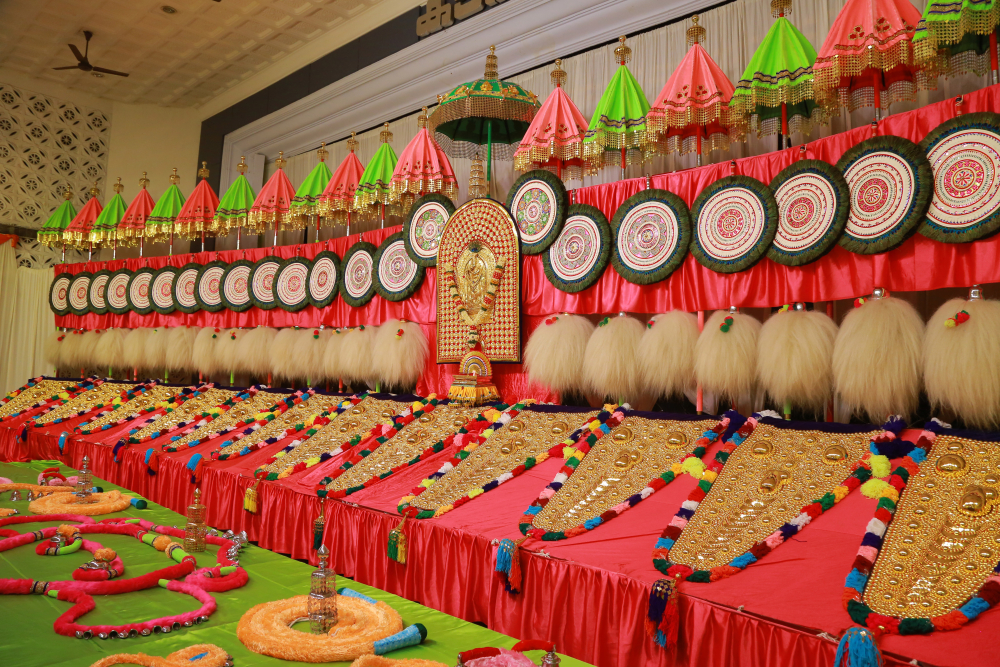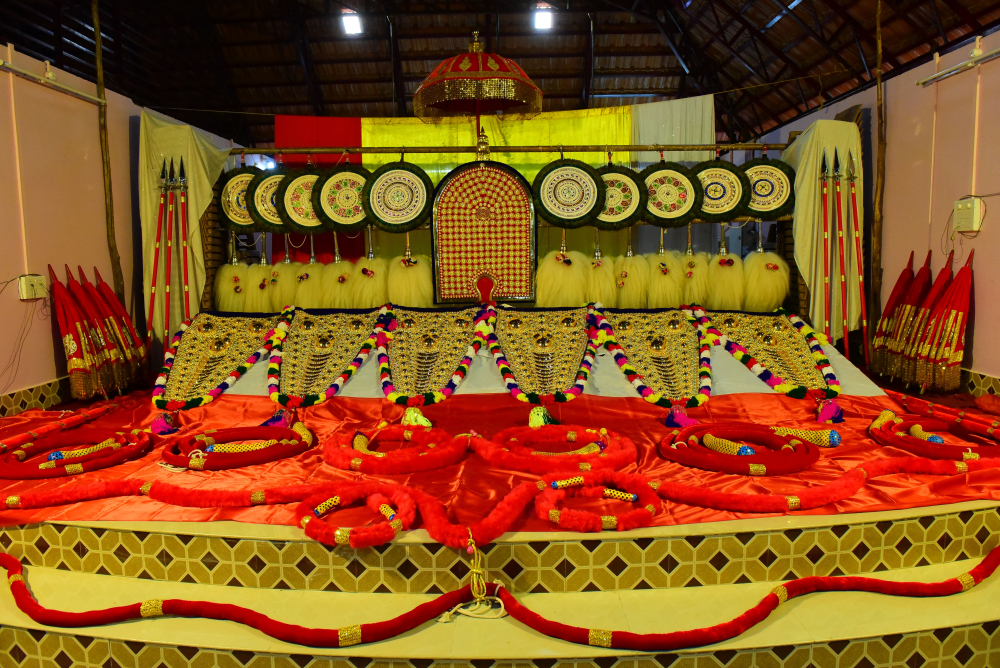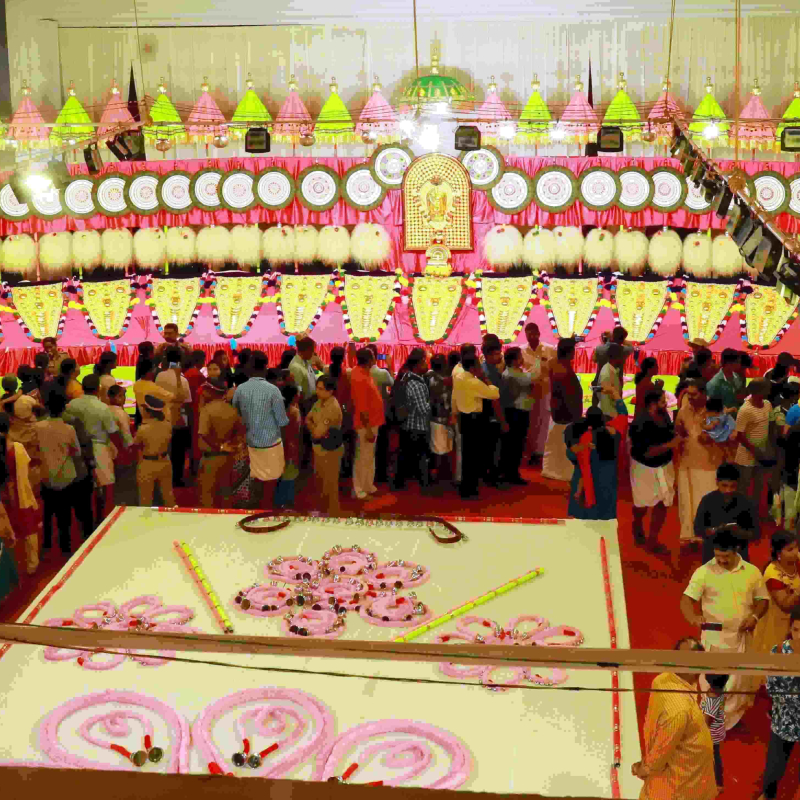Elephant pageants are a unique feature of Kerala. A festive parade is usually accompanied by a percussion orchestra and is a showcase of the expert skills of all the artisans involved, especially those who work so meticulously to design the fineries displayed on the elephants during the pageant.
The main items used in the fineries are frontlets (thalekkettu or nettippattam), silken parasols (kuda), a pair of yak tail fly-whisks (venchamaram) and a pair of peacock feather fans (alavattom). Other items include a neck-coir covered with a smooth and colourful cloth, a chain of bells designed to be tied around the neck, a pair of anklets with small bells for the forelegs, and a set of bigger bells on either side of the body, resting on the belly.
Years ago, the frontlet of the elephant consisted simply of a red velvet cloth cut into a triangular shape and perhaps decorated with crescent-shaped embroidery of gold thread. Over the years, this basic template was refined until the modern elephant frontlet emerged. In the last 50 years, however, there have been no noteworthy changes in the design of elephant frontlets. In fact, these frontlets are now being used in other parts of India, such as in the Dasara elephant processions in Mysore.
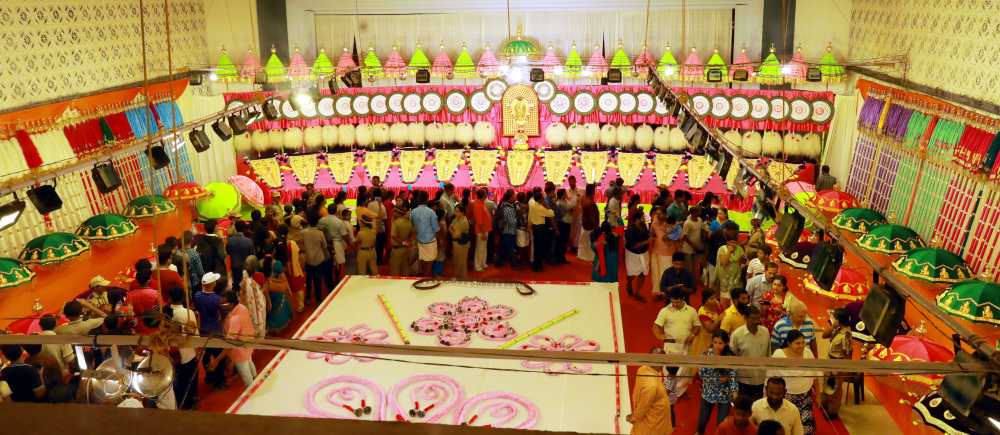
Nettipattam aka Thalekkettu
The gold-plated caparison that is used to adorn the forehead of the elephants during ceremonial occasions. According to legend, Lord Brahma was the first being to design a forehead ornament for an elephant, and Airavatha, Lord Indra’s white elephant, was the first creature to wear it. Over the course of history, war elephants had to be caparisoned to shield them from the spears of the enemy. These shields were decorated more and more elaborately and evolved into the beautiful ornaments that are now known as nettipattam. It is believed that the nettipattam that is currently in use was designed by Kirangattu Namboothiri, a Brahmin chieftain who lived in Peruvanam Gramam (a Brahmin village in old central Kerala, which, according to myth, was established by Lord Parashurama). The ornament was first used in the Peruvanam Pooram festival, which is the oldest temple festival in Kerala.
The nettipattam has hemispherical plates of different sizes called kinnam (plate) or kumila (bubble). These come in three different varieties: valiyakinnam (the big plate), mukkinnam (triple-plate) or kumbakinnam (potbellied plate) and ennangal (small plate). The crescent-shaped plate is called chandrakkala (crescent moon). The bouquet-shaped bunches of coloured woollen threads attached to the edges of the ornament are called kalanchi. The coloured woollen threads stitched on the border are the podippu. The designs are arranged symmetrically on the red velvet cloth and a cotton rope (kannakkayar) may also be attached to the cloth to tether the nettipattam to the forehead of the elephant.
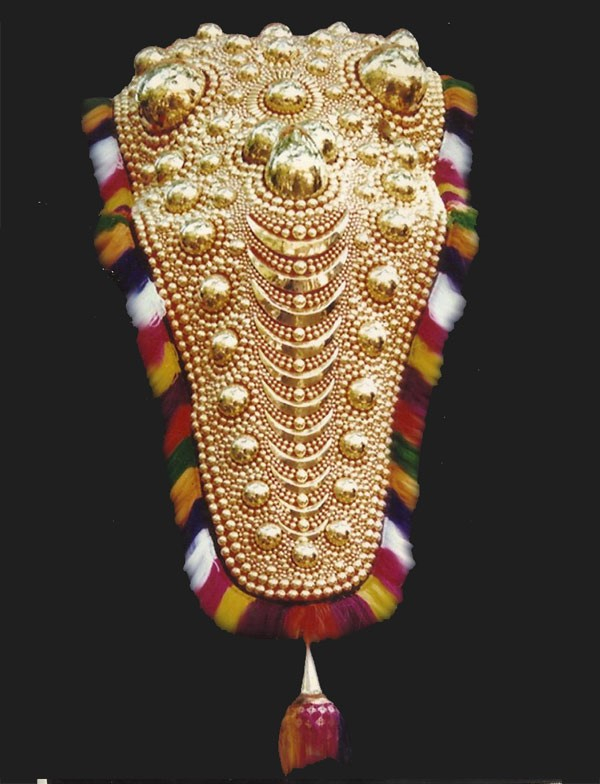
Nettipattam are of three types—chooralpoli, nagapadam and vandodu—each implying which of the three plates are stitched around the valiyakinnam and mukkinnam.
Choorappoli refers to half–cut, cane-shaped plates, which are about one to two inches in size. These plates are stitched around the valiyakinnam and the mukkinnam. This is considered superior and is used to adorn the main elephant at the pageant.
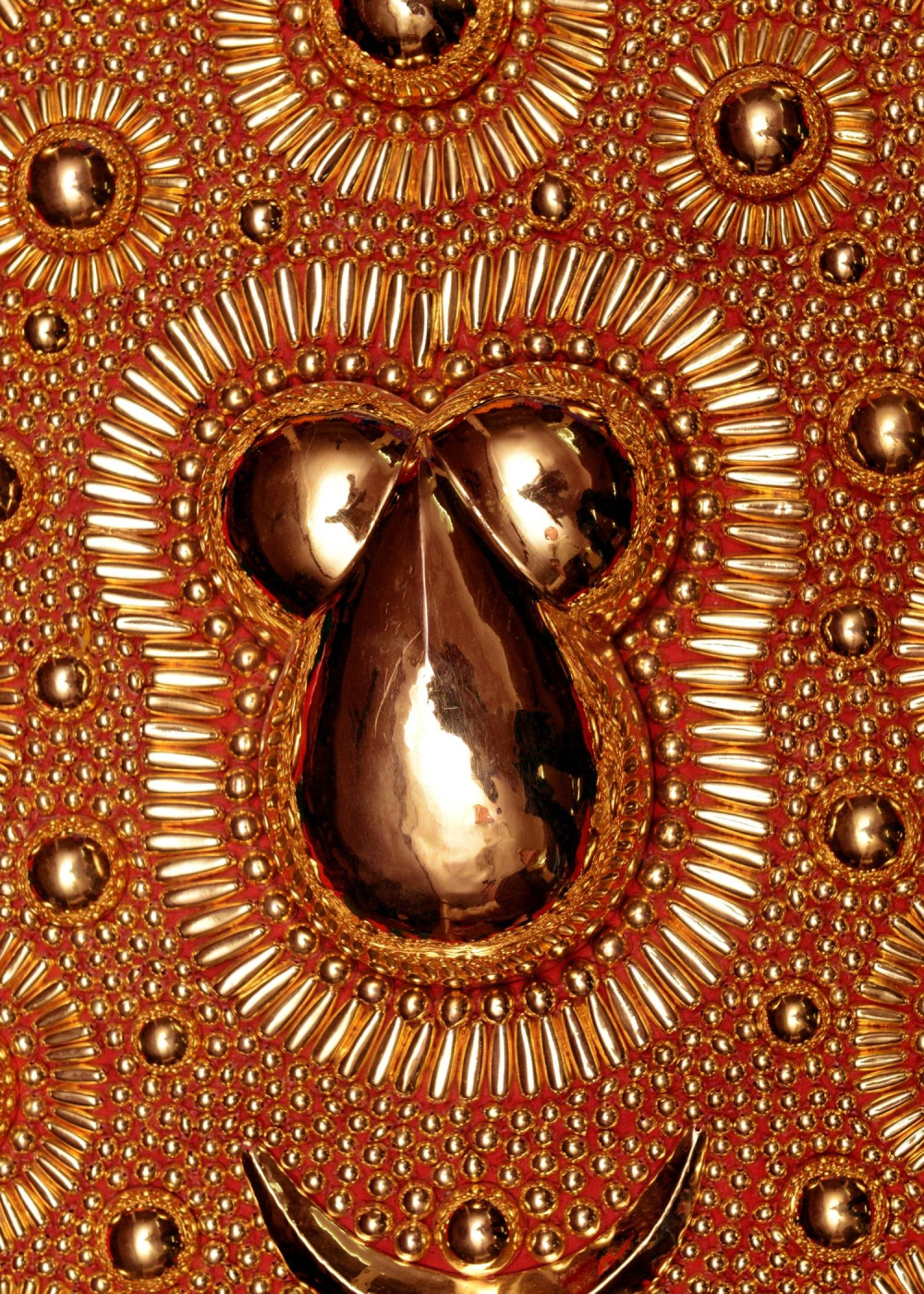
Nagapadam is a plate shaped like a serpent’s head, stitched around the kinnams. This nettipattam is usually used for the elephants in the second and third positions, which usually stand on either side of the main elephant.
Vandodu are plates shaped like the outer shells of bees (vandu = bee in Malayalam). These plates will be sewed close to the kinnams. This nettipattam is the base form and will be used to adorn the other elephants in the array.
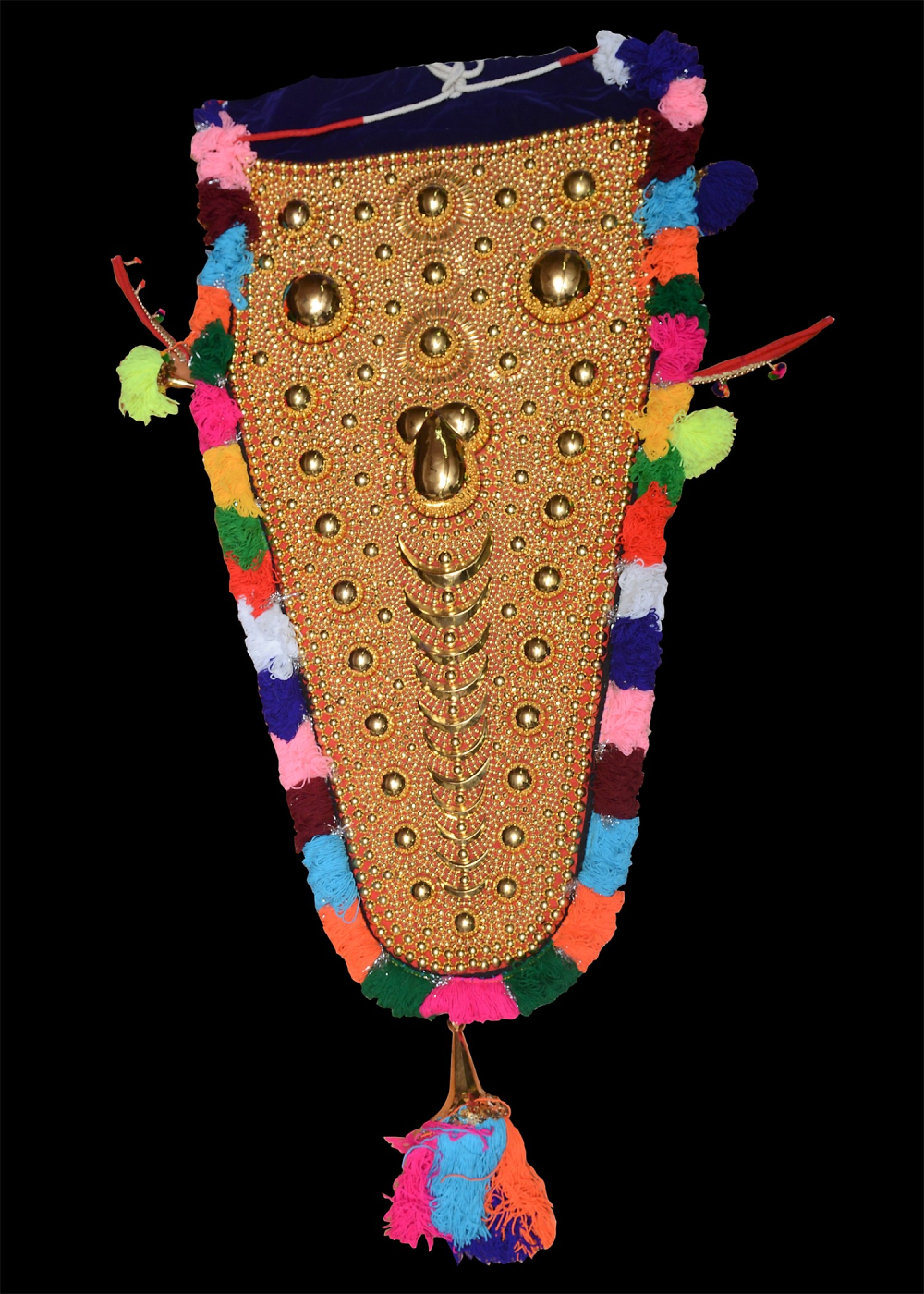
Silk Parasol
These are fine decorative silk umbrellas that are raised atop the elephants to provide a ‘royal’ touch to the procession of elephants at the pageant
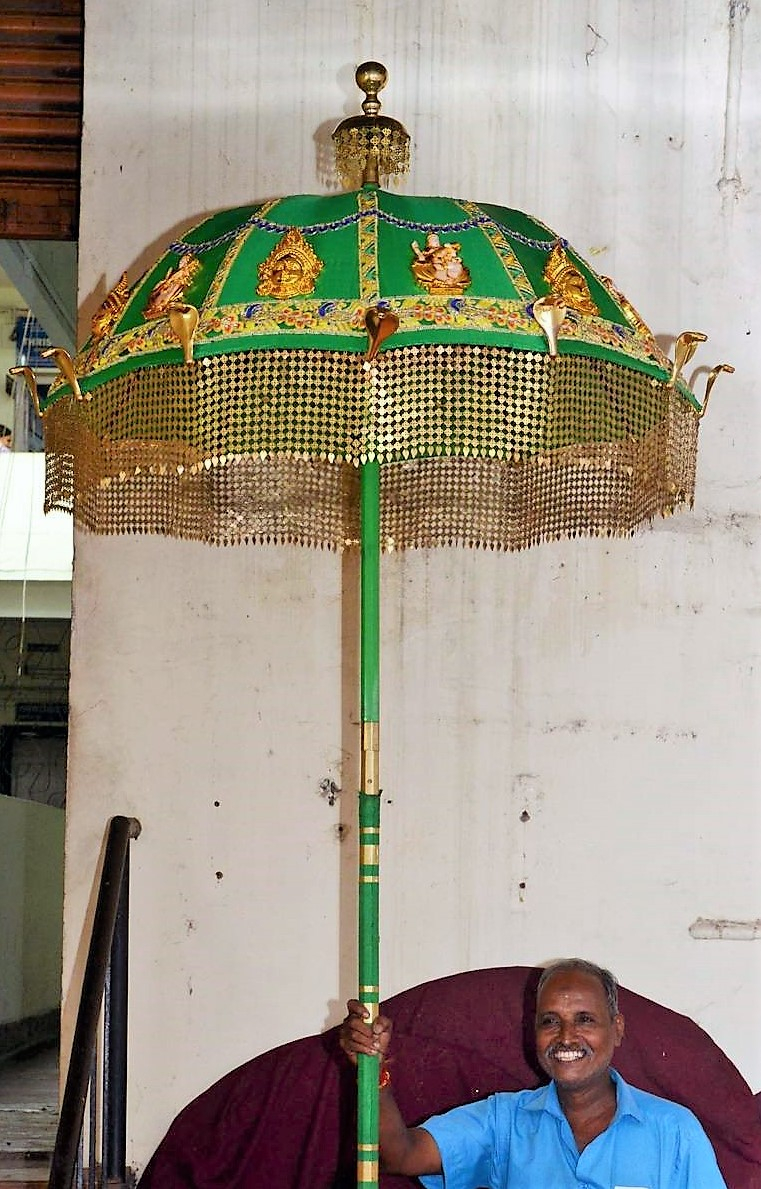
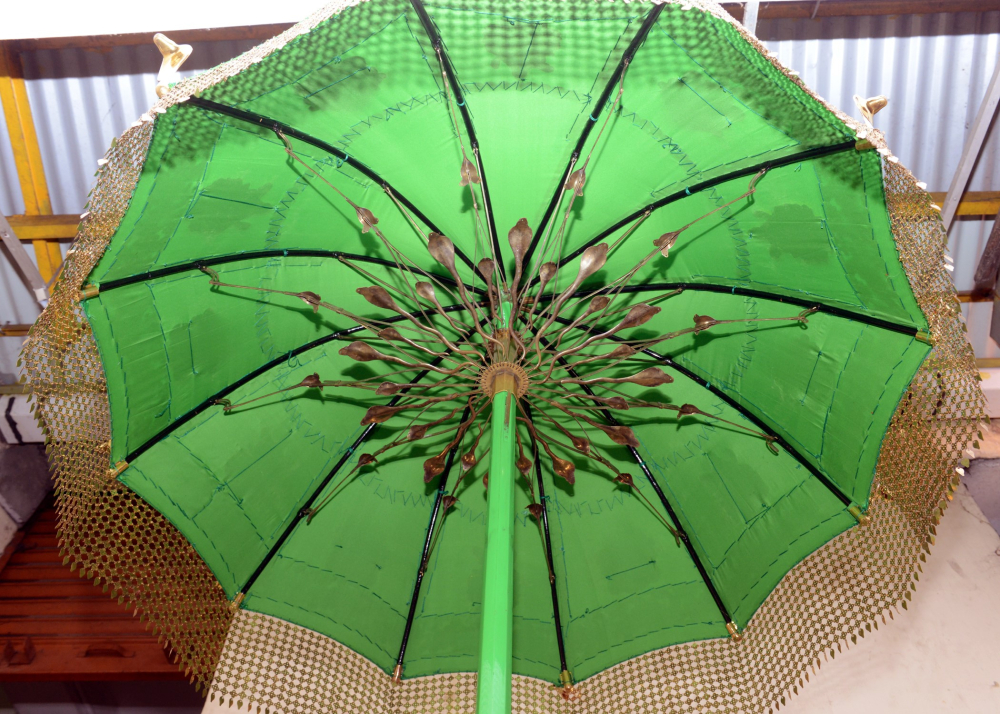
Venchamaram
These are a pair of traditional fly-whisks made out of white yak tails. The person atop the elephant whisks the venchamaram at regular intervals according to the beat of the orchestra. The strands of tail hair are tied together with a string which is wound around a wooden mace that is carefully designed with a groove to allow the string to become entwined.
Alavattom
This refers to a pair of ornamental, circular fans made of peacock feathers. The stem of the peacock feather is aesthetically designed on a circular board and the alavattom gets attention only if the artistic ability and craftsmanship of the maker is up to the mark. The person atop the elephant raises the alavattom along with the venchamaram at regular intervals in accordance with the beat of the traditional percussion orchestra. The peacock feather that forms the border of the fan gives the alavattom a certain divine charm.
Kachakkayar or Kayar
Kachakkayar or kayar is a decorated rope covered with a silk cloth and tied around the neck of the elephant. The kannakkayar of the nettipattam is fastened to this decorated rope.
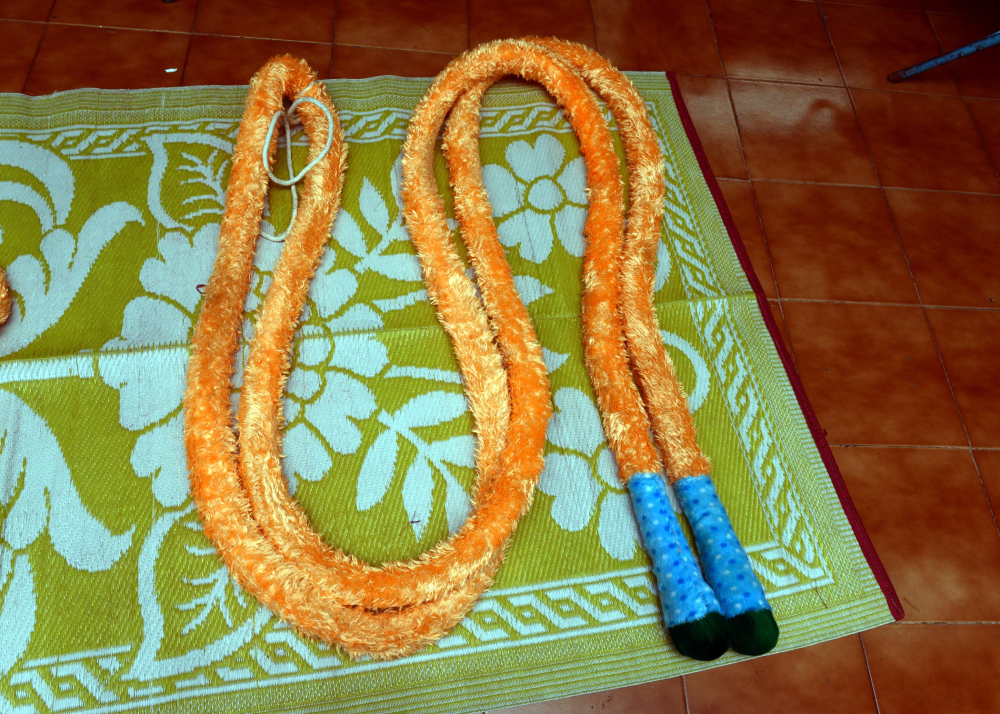
Manikoottam
The manikoottam is a set of decorative bells that provides a rhythmic clang to the majestic walk of the elephants in the procession. Manikoottam are of three types: kazhuthumani (necklace), kalmani (anklets) and pallamani (belly bells).
An elephant at the pageant decorated with these traditional accoutrements is considered attractive, divine and incomparably beautiful.
